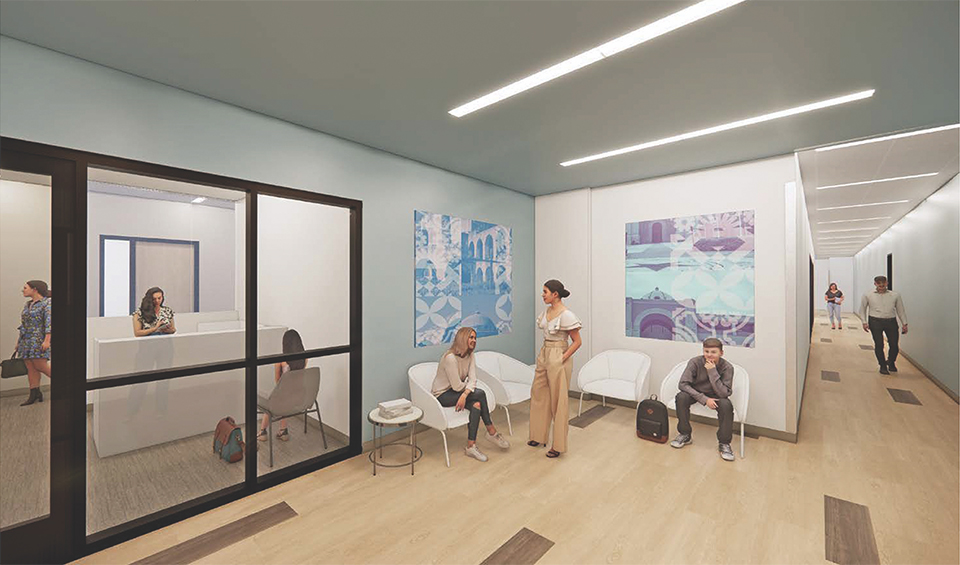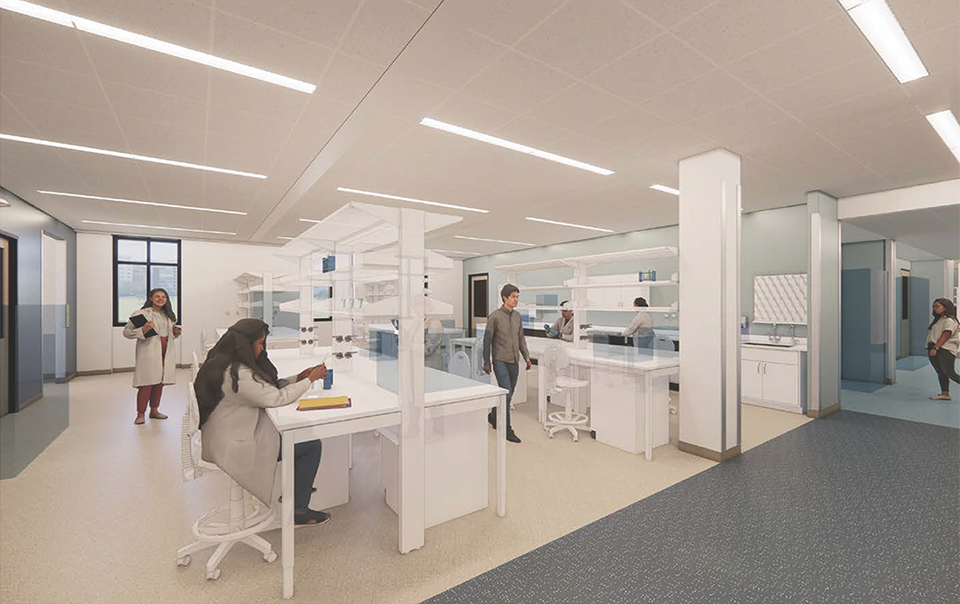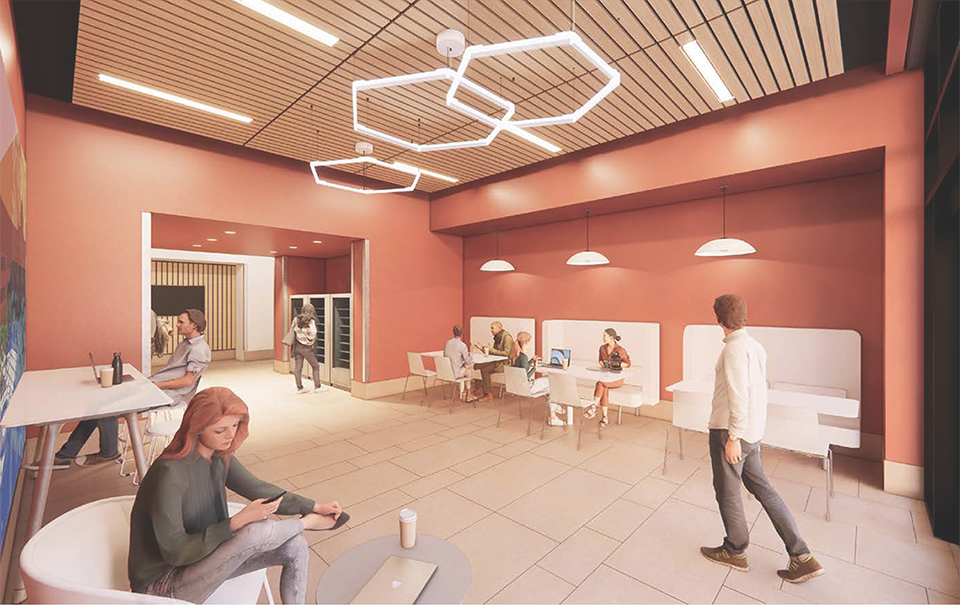A Bright Future

By Sam Boykin
When Texas A&M University-San Antonio celebrated its 15th anniversary last year, it was the commemoration of both a remarkable journey and an unlikely success story. Established in a region often overlooked and historically underserved, a four-year institution was a spark of possibility for the community, but it was not built overnight. Despite the odds faced in creating a new institution, the University has flourished, establishing a solid foundation upon which to grow and thrive. Indeed, the future looks very bright at A&M-San Antonio, which is experiencing record enrollment with plans for new academic programs, campus facilities and transformative community resources. As an institution created to support the South Side, our future is centered on addressing the region’s most pressing needs and uplifting our community. Here’s a look at what’s on the horizon.
Educare San Antonio
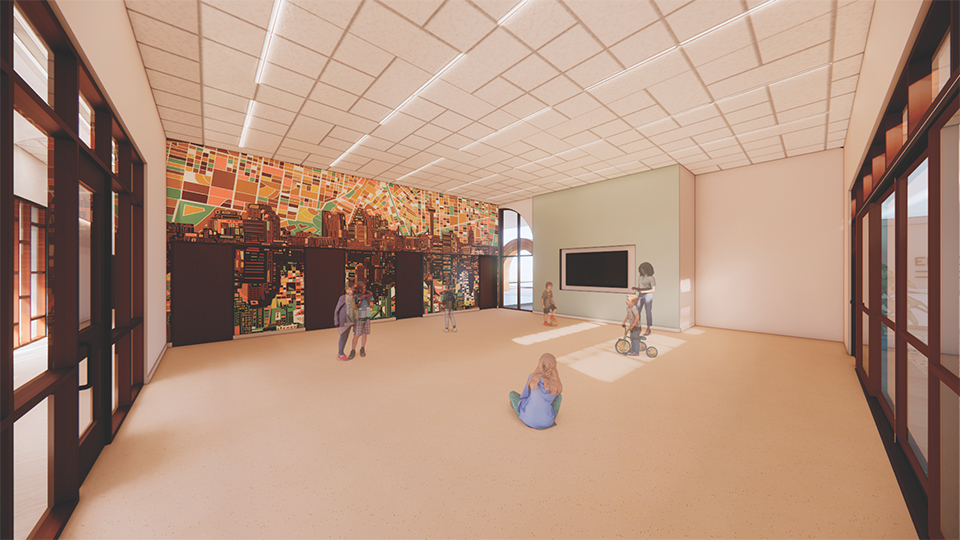 Since the onset of the pandemic, Bexar County has been designated a “childcare desert”—a community with a severe deficit of accessible, high-quality early education options. The challenge is particularly acute in South San Antonio, where the number of available spots for quality childcare is approximately five per 100 children.
Since the onset of the pandemic, Bexar County has been designated a “childcare desert”—a community with a severe deficit of accessible, high-quality early education options. The challenge is particularly acute in South San Antonio, where the number of available spots for quality childcare is approximately five per 100 children.
With Educare San Antonio, the only school of its kind in Texas, the University will offer much-needed childcare for students, staff and Bexar County residents. A&M-San Antonio in April hosted a groundbreaking for Educare, which is scheduled to open in the summer of 2026. The $20 million facility will include infant, toddler, preschool and kindergarten facilities, as well as areas dedicated to strengthening family-school connections and resources. The school plans to serve over 200 children and families.
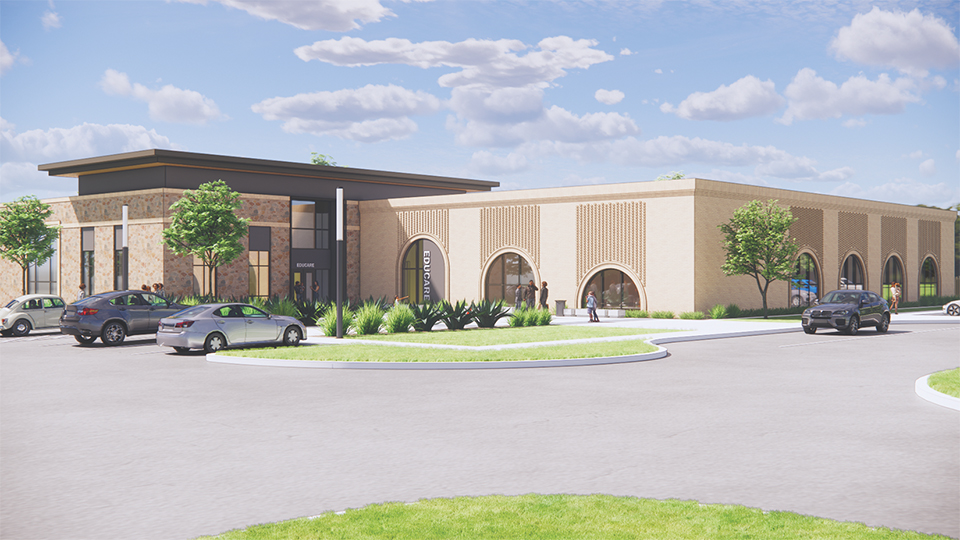 A&M-San Antonio is launching the 26,000-square-foot facility in partnership with The Educare Network, a network of early childhood professionals that has opened 25 other schools around the country. The University’s College of Education and Human Development will oversee and manage Educare San Antonio, which will serve as an innovative teaching resource. The center will help train students studying early childhood education as well as business students looking to gain experience with issues like state licensing regulations and balancing budgets.
A&M-San Antonio is launching the 26,000-square-foot facility in partnership with The Educare Network, a network of early childhood professionals that has opened 25 other schools around the country. The University’s College of Education and Human Development will oversee and manage Educare San Antonio, which will serve as an innovative teaching resource. The center will help train students studying early childhood education as well as business students looking to gain experience with issues like state licensing regulations and balancing budgets.
Educare San Antonio will be funded by the City of San Antonio, the Texas A&M University System, A&M-San Antonio and various philanthropic sources. Partners in this collaborative initiative include city-funded Pre-K 4 SA and other community organizations.
Like the rest of campus, the architectural style will reflect the classic beauty and craftsmanship of San Antonio’s historic structures. Complementing this distinctive look will be fun and inviting accents, such as arches and canopies. Other features will include a covered communal plaza and classrooms that connect directly to outdoor spaces and play areas.
“Educare San Antonio will be the only resource of its kind in the state, helping improve the lives of hundreds of families. It will be the gold standard for early childhood education and care, while establishing a seamless pathway for students to achieve academic and career success.” ~ Dr. Emma Savage-Davis, dean of the College of Education and Human Development
Public Health and Education Building
Bexar County has alarmingly high rates of obesity, diabetes, heart disease and other chronic ailments compared to the rest of the country. In parts of South San Antonio, there is a 20-year difference in lifespan compared to the North Side.
With these disparities in mind, A&M-San Antonio is making significant strides in improving community health and bolstering critical research. One primary initiative is the University’s Public Health and Education Building. Scheduled to open in the spring of 2026, the $55 million, state-of-the-art facility will expand education pathways and research opportunities throughout South Texas, enabling the University to grow its enrollment in health- and science-related courses.
The 35,500-square-foot center will include administrative and instructional spaces for the community health program, kinesiology labs, faculty offices, classrooms and administrative support for the College of Education and Human Development. The space will also support innovative new programs, such as the University’s Public Health Genetics and Genomics Laboratory, which studies and addresses the health disparities that exist in South Bexar County.
“The Public Health and Education Building symbolizes the incredible potential of the University,” said President Salvador Hector Ochoa. “The facility will serve as a launchpad for effecting change in the community and help build a workforce to provide compassionate patient care.”
As part of A&M-San Antonio’s ongoing mission to improve public health in the region and expand health sciences teaching, the University has also established a collaboration with A&M Health Science Center and University Health, which is building a hospital, medical complex and its public health institute on 68 acres next to the A&M-San Antonio campus. University Health’s Palo Alto Hospital is scheduled to open in 2027, while Vida, the health care center and headquarters for the University Health Institute for Public Health, is scheduled to open in 2026.
New Academic Programs
A recent analysis conducted in the 75-mile radius around Bexar County identified critical workforce gaps in the fields of health care and engineering. As the region’s population continues to grow and technological advances change how and where people work, it’s critical that younger generations are prepared to navigate this shifting landscape.
A&M-San Antonio currently offers 39 undergraduate degrees and 23 graduate degrees, with areas of study ranging from criminology, history and business administration to kinesiology, biological sciences and sociology. With the University experiencing record enrollment—this fall’s incoming class totaled more than 8,000 students, marking a nearly 10% increase in our two-year enrollment—the University is looking to expand its academic programs to better serve students and help satisfy the region’s changing workforce needs.
Part of this effort includes plans for developing foundational programs in nursing, health care administration, electrical engineering, computer engineering and construction engineering technology. The University is seeking legislative funding to launch these programs. A&M-San Antonio is striving to provide students with the skills and education they need to launch successful careers in these in-demand sectors.
The University plans to develop wrap-around support services across these University programs that include experiential learning, career counseling, professional education, distance education and job placement. These strategies enable the University to continue its successful track record of developing new programs to meet the needs of students and the region.
“By expanding our academic programs, we are not only providing students with opportunities for personal and professional growth, but we’re also helping meet the needs of the Texas workforce,” said Dr. Mohamed Abdelrahman, provost and senior vice president for academic affairs. “With programs that cater to a wide-array of student interests, our graduates are excelling in in-demand fields and supporting the local and regional economy.”
Student Housing and Dining
 As A&M-San Antonio continues to grow its enrollment and academic and athletic programs, there is an increasing demand for more on-campus housing. Students feel more connected to the University when they live on campus, as it enhances their college experiences and creates a welcoming sense of engagement and belonging.
As A&M-San Antonio continues to grow its enrollment and academic and athletic programs, there is an increasing demand for more on-campus housing. Students feel more connected to the University when they live on campus, as it enhances their college experiences and creates a welcoming sense of engagement and belonging.
The Texas A&M University System’s Board of Regents in February approved $80 million for a new student housing and dining project. A&M-San Antonio has capacity for 720 student beds between its two residence halls, Esperanza Hall and Estrella Hall, which opened in the fall of 2024. This third phase of housing will add 300 student beds and a dining facility, helping accommodate significant student enrollment, especially as the campus continues to attract a larger population of out-of-region students. The University currently boasts students from 30 states and Puerto Rico, with some 24 countries represented among the student population.
The project calls for a four-story building to be constructed south of Estrella Hall, with features including a reception and lounge area, community learning center and laundry facilities. Additionally, the new facility will have an all-you-can eat dining hall, increasing food options for students, faculty and staff. The targeted completion date for the project is early 2028, with students moving in by the fall semester.
This phase of housing will be integral to A&M-San Antonio’s continued recruitment of athletes, out-of-region students, foster youth, international and transfer students. It’s also a critical part of the University’s support system, helping students develop pathways to pursue their ambitions and interests.
“Additional housing is critical for helping our growing number of students find their place at A&M-San Antonio,” said Dr. Juan Guardia, vice president for student affairs. “To make the most of their college experience, students wantto be on campus. We’re dedicated to making our campus accessible and providing spaces where students can socialize, study, eat and form a sense of belonging. Our new housing also contributes to higher retention rates, allowing students to focus on their studies and graduate on time.”
Garden Classroom
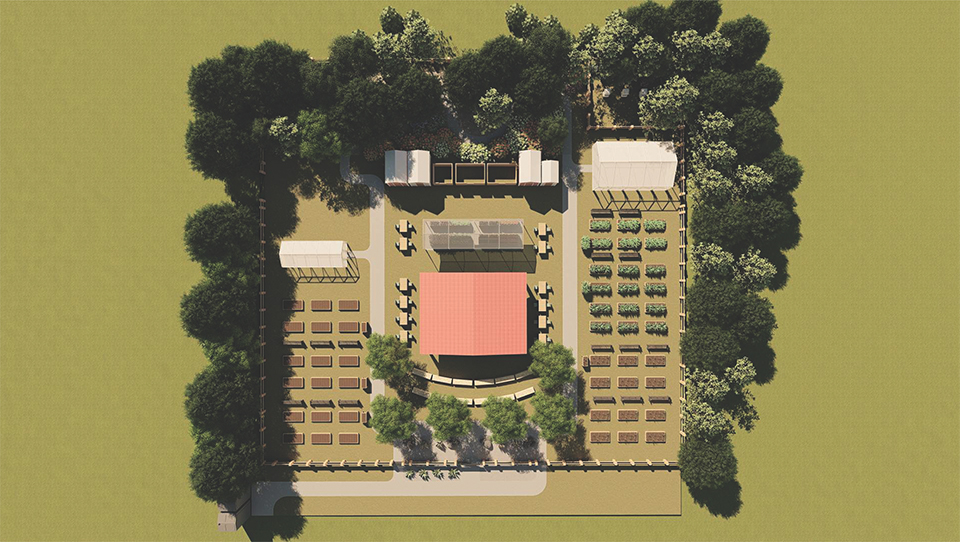 With nearly 700 acres, A&M-San Antonio has rapidly expanded its footprint over the years with new academic buildings, student housing and recreational facilities. But even with all the available land, relatively little has been done to take advantage of the area’s natural beauty—until now.
With nearly 700 acres, A&M-San Antonio has rapidly expanded its footprint over the years with new academic buildings, student housing and recreational facilities. But even with all the available land, relatively little has been done to take advantage of the area’s natural beauty—until now.
Unbeknownst to most of the campus community, the University has had a greenhouse for years. It’s been moved multiple times to make way for new buildings. Its current home is behind the Business Library Hall.
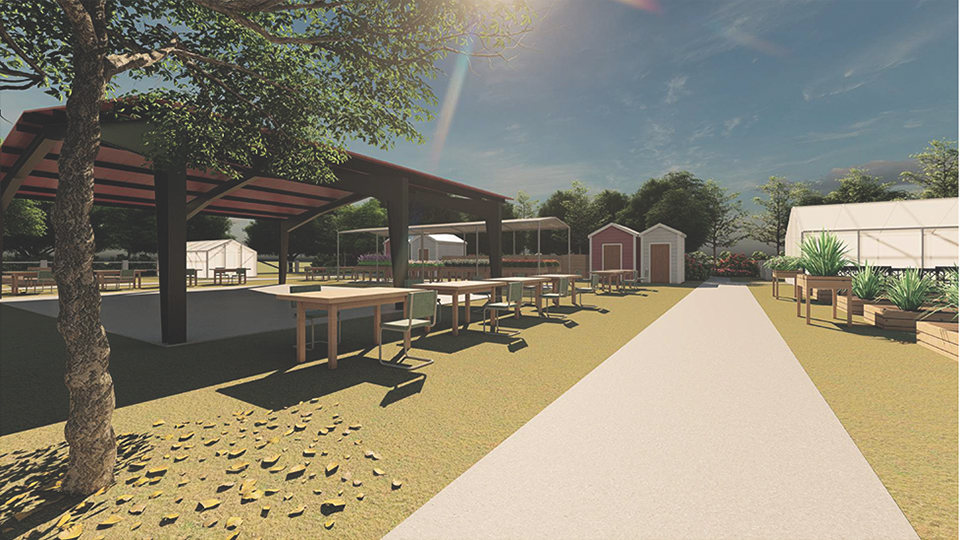 J. Rodolfo Valdez Barillas, associate professor of biology, has managed and developed the space, using it for biology classes and research projects. He’s also collaborated with student volunteers and the Mays Center for Experiential Learning and Community Engagement to establish a vegetable garden that supplies fresh produce to The General’s Store, the University’s food pantry.
J. Rodolfo Valdez Barillas, associate professor of biology, has managed and developed the space, using it for biology classes and research projects. He’s also collaborated with student volunteers and the Mays Center for Experiential Learning and Community Engagement to establish a vegetable garden that supplies fresh produce to The General’s Store, the University’s food pantry.
The modest greenhouse is getting a big makeover as the University develops a 1-acre garden classroom complex that will include an outdoor classroom. Barillas is spearheading this initiative.
“We are moving forward with a more permanent space and facilities that support outdoor teaching, gardening and greenhouse research,” he said. “We envision this new space as a place where outdoor learning can happen, but more importantly, where our University community can gather, socialize and get some respite from a busy day’s work. We hope the space can provide the mental health benefits provided by outdoor natural spaces.”
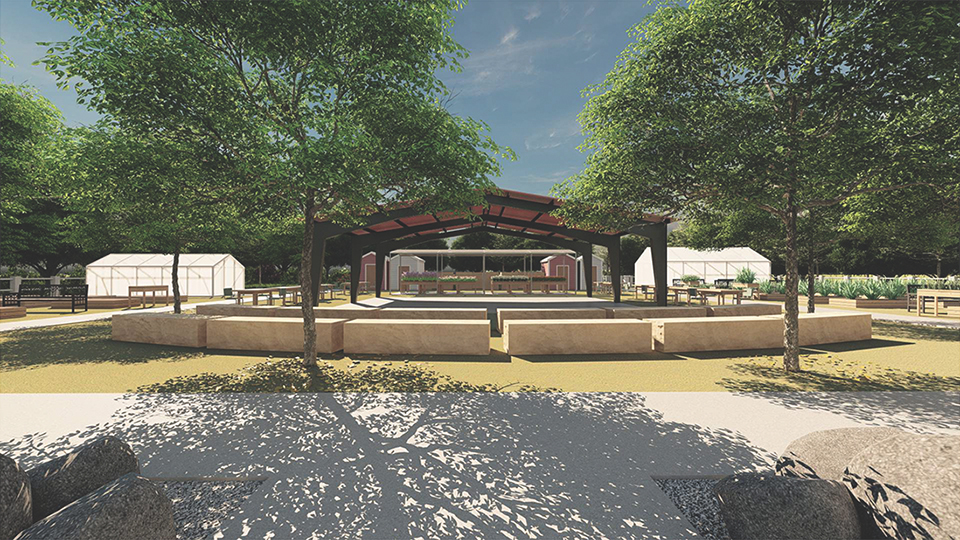 The $2 million project is being built in phases, with the first phase scheduled to wrap up in August. It will include an outdoor classroom, crushed gravel walking trails and a covered pavilion for events like movie nights, poetry readings and other special occasions.
The $2 million project is being built in phases, with the first phase scheduled to wrap up in August. It will include an outdoor classroom, crushed gravel walking trails and a covered pavilion for events like movie nights, poetry readings and other special occasions.
The first phase will also include electric and plumbing infrastructure to support a future research area with an expanded greenhouse and garden that will provide nutritious food for students. The entire project is expected to be complete in the spring of 2026.
“I love that we’re dedicating land for this purpose. It will be a protected, dedicated space that will also support local wildlife. As the campus continues to grow, this gives the University a beautiful, natural area that students, faculty and staff can all enjoy.” ~ Dr. Debra Feakes, dean of the College of Arts and Sciences.
At a Glance
 A&M-San Antonio’s fall 2024 numbers illustrate the remarkable growth and trajectory of the student body, as well as how the University’s reach continues to expand across the country and the world. This critical data points to the fact that A&M-San Antonio is on its way to becoming one of the state’s most notable institutions of higher education.
A&M-San Antonio’s fall 2024 numbers illustrate the remarkable growth and trajectory of the student body, as well as how the University’s reach continues to expand across the country and the world. This critical data points to the fact that A&M-San Antonio is on its way to becoming one of the state’s most notable institutions of higher education.
Planning for the Future
As A&M-San Antonio builds upon its solid foundation, it’s also planning for a bright future. In addition to the projects underway, leadership is working collaboratively with community leaders and stakeholders on developing a long-term strategic plan to help set a course
for the next five to 10 years.
A primary focus of this plan is to establish A&M-San Antonio as a destination campus. While this includes enhancing academic programs and research initiatives, another important strategy is developing a focal point for the campus community. At the forefront of this initiative is a student union, a vibrant gathering place designed not only to accommodate the growing student body, but to also create a sense of place, community and belonging.
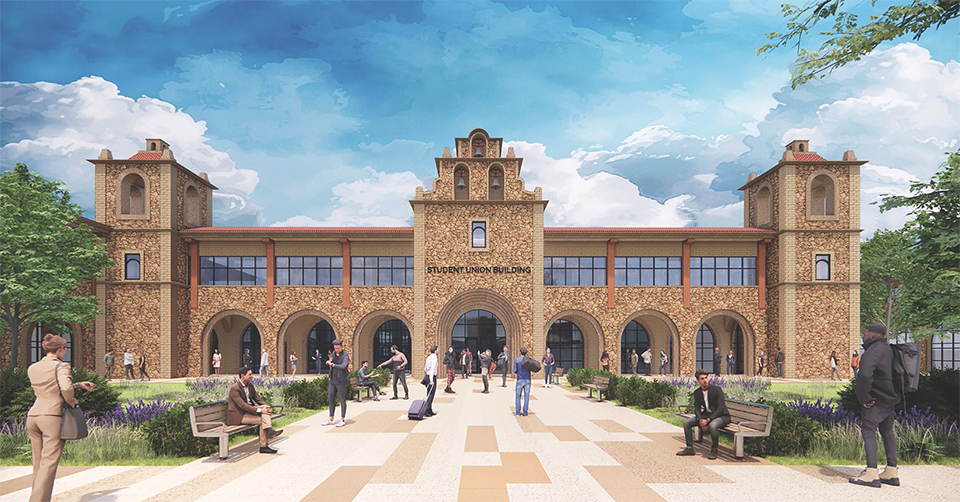 Envisioned as the “beating heart” of the A&M-San Antonio campus, initial plans call for a welcoming facility with programs designed to support personal and professional development, academic achievement, governance, student organizations and community initiatives.
Envisioned as the “beating heart” of the A&M-San Antonio campus, initial plans call for a welcoming facility with programs designed to support personal and professional development, academic achievement, governance, student organizations and community initiatives.
Potential features include a theatre/auditorium, ballroom, student organization offices, meeting rooms, primary campus bookstore and inviting outdoor spaces for special events where the University community can relax and socialize. It’s a project that’s destined to fundamentally improve the culture and connectivity of the University. For those who wish to make this resource possible for A&M-San Antonio students and the community, several prominent naming and philanthropic investment opportunities will be available.
 “There are many exciting changes on the way at A&M-San Antonio,” said President Ochoa. “As the campus continues to expand its footprint with new academic buildings and student resources, we are poised to not only serve as one of the region’s top education resources, but also becoming a workforce development engine, preparing the next generation of leaders and boosting the economy. While it’s amazing what the University has achieved since it was founded in 2009, the road ahead holds even greater promise as the University establishes an increasingly vital and supportive role throughout the San Antonio community and all of Texas.”
“There are many exciting changes on the way at A&M-San Antonio,” said President Ochoa. “As the campus continues to expand its footprint with new academic buildings and student resources, we are poised to not only serve as one of the region’s top education resources, but also becoming a workforce development engine, preparing the next generation of leaders and boosting the economy. While it’s amazing what the University has achieved since it was founded in 2009, the road ahead holds even greater promise as the University establishes an increasingly vital and supportive role throughout the San Antonio community and all of Texas.”
“As the campus continues to expand its footprint with new academic buildings and student resources, we are poised to not only serve as one of the region’s top education resources, but also becoming a workforce development engine, preparing the next generation of leaders and boosting the economy,” ~ President Hector Salvador Ochoa.


